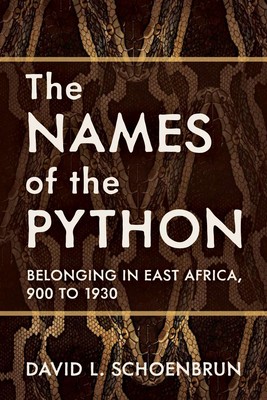
- We will send in 10–14 business days.
- Author: David L Schoenbrun
- Publisher: University of Wisconsin Press
- ISBN-10: 0299332500
- ISBN-13: 9780299332501
- Format: 15.5 x 23.1 x 2.3 cm, kieti viršeliai
- Language: English
- SAVE -10% with code: EXTRA
Reviews
Description
Systems of belonging, including ethnicity, are not static, automatic, or free of contest. Historical contexts shape the ways which we are included in or excluded from specific classifications. Building on an amazing array of sources, David L. Schoenbrun examines groupwork-the imaginative labor that people do to constitute themselves as communities-in an iconic and influential region in East Africa. His study traces the roots of nationhood in the Ganda state over the course of a millennia, demonstrating that the earliest clans were based not on political identity or language but on shared investments, knowledges, and practices.
Grounded in Schoenbrun's skillful mastery of historical linguistics and vernacular texts, The Names of the Python supplements and redirects current debates about ethnicity in ex-colonial Africa and beyond. This timely volume carefully distinguishes past from present and shows the many possibilities that still exist for the creative cultural imagination.EXTRA 10 % discount with code: EXTRA
The promotion ends in 23d.07:56:33
The discount code is valid when purchasing from 10 €. Discounts do not stack.
- Author: David L Schoenbrun
- Publisher: University of Wisconsin Press
- ISBN-10: 0299332500
- ISBN-13: 9780299332501
- Format: 15.5 x 23.1 x 2.3 cm, kieti viršeliai
- Language: English English
Systems of belonging, including ethnicity, are not static, automatic, or free of contest. Historical contexts shape the ways which we are included in or excluded from specific classifications. Building on an amazing array of sources, David L. Schoenbrun examines groupwork-the imaginative labor that people do to constitute themselves as communities-in an iconic and influential region in East Africa. His study traces the roots of nationhood in the Ganda state over the course of a millennia, demonstrating that the earliest clans were based not on political identity or language but on shared investments, knowledges, and practices.
Grounded in Schoenbrun's skillful mastery of historical linguistics and vernacular texts, The Names of the Python supplements and redirects current debates about ethnicity in ex-colonial Africa and beyond. This timely volume carefully distinguishes past from present and shows the many possibilities that still exist for the creative cultural imagination.

Reviews